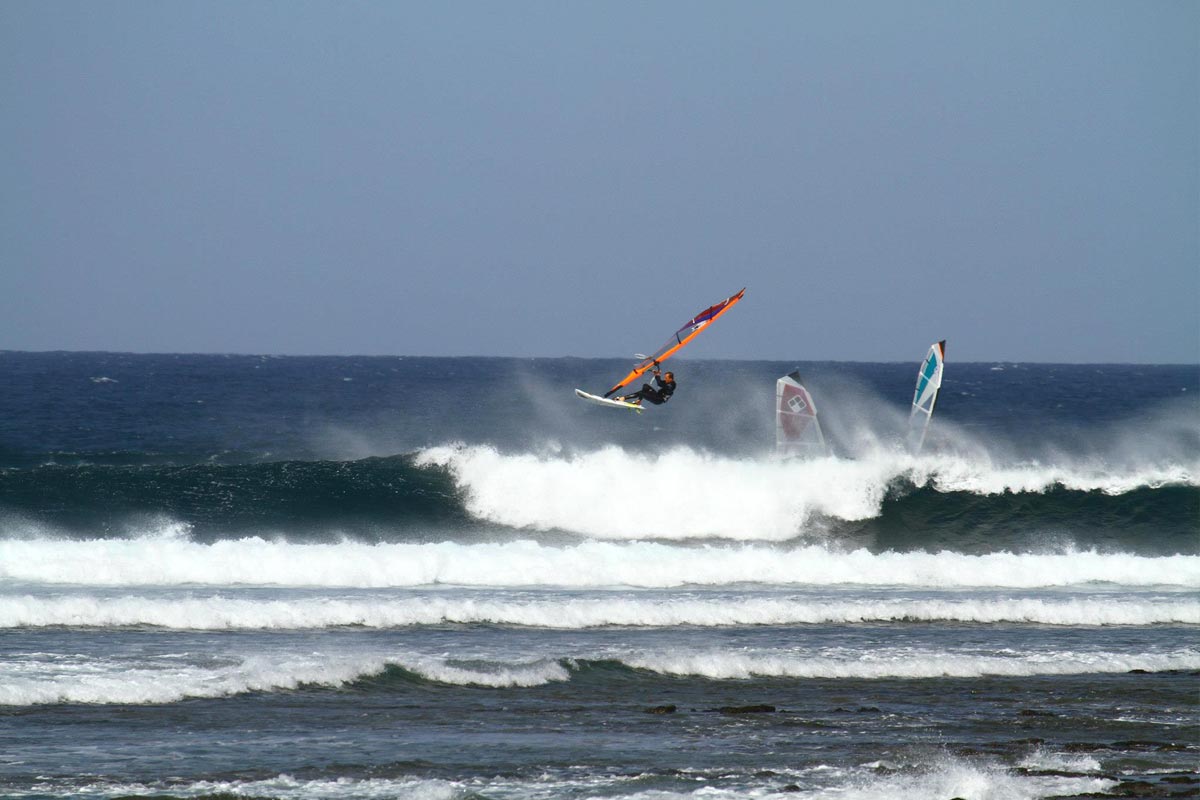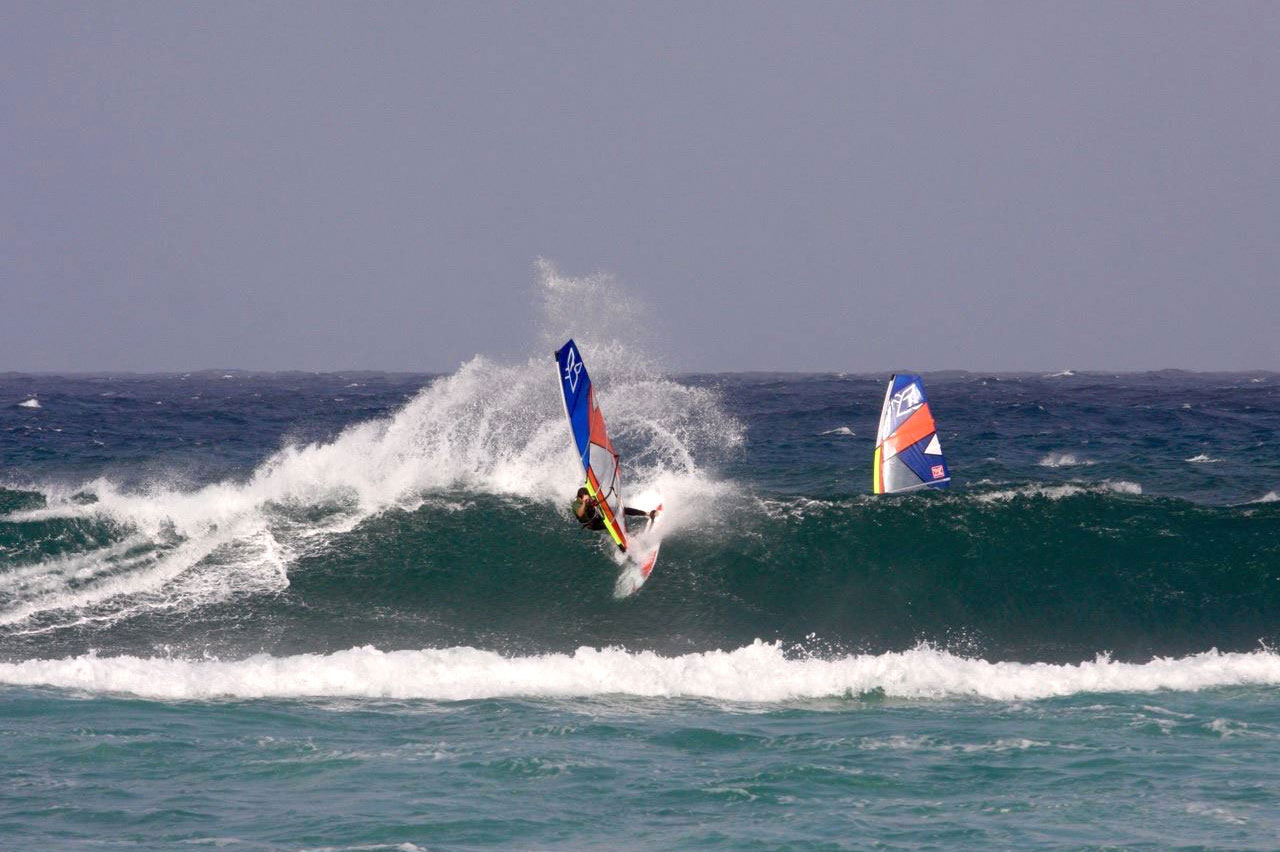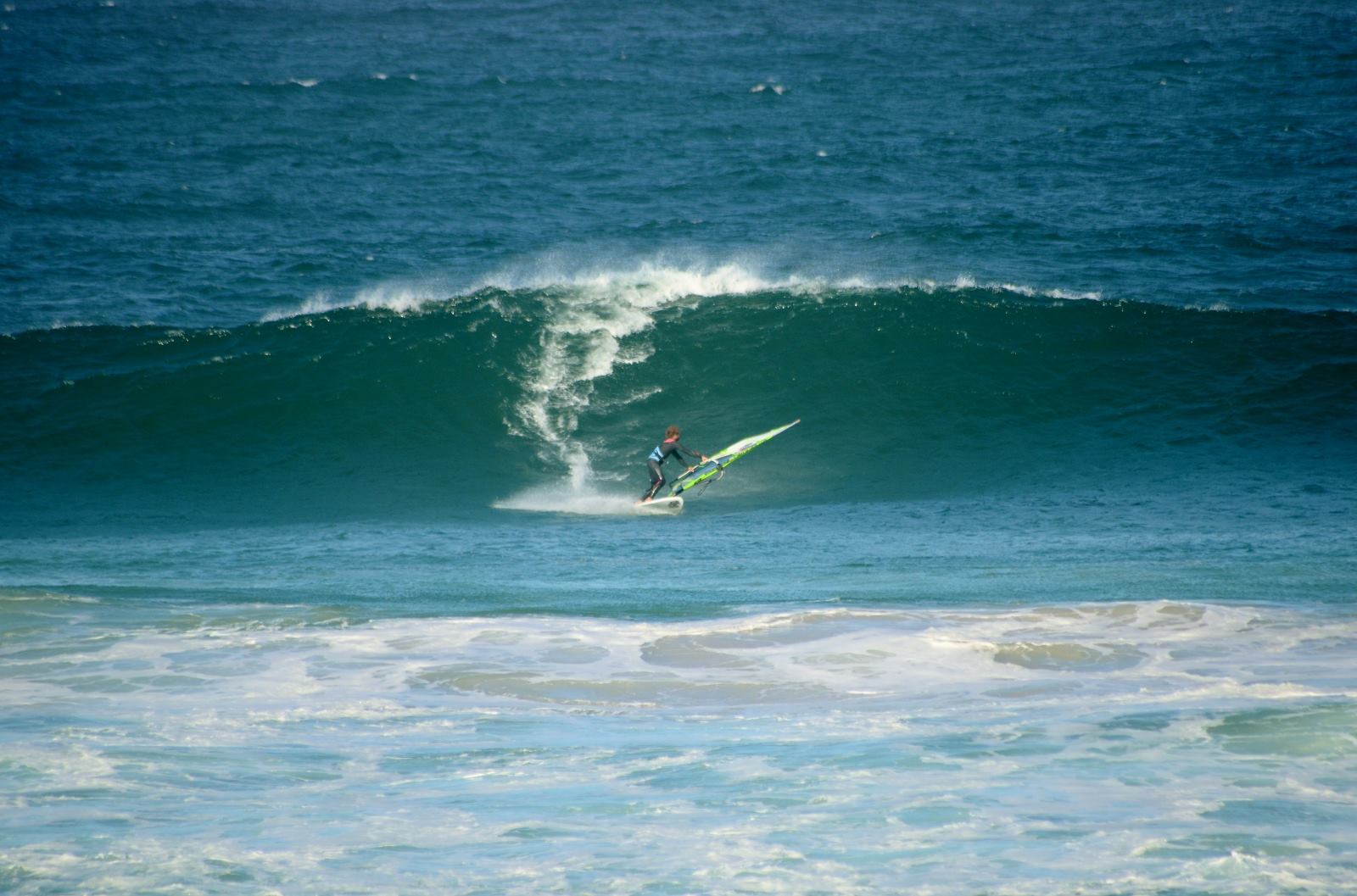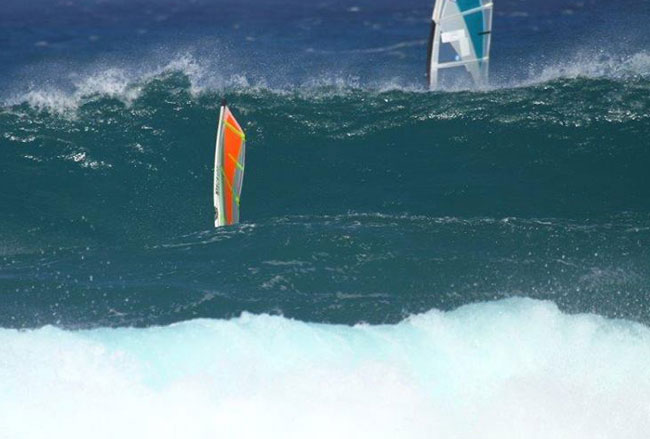We often hear about the differences of onshore wave riding versus side shore. When talking side shore, however, there are nuances within these wind directions as well. For instance, as nice as side shore actually is to sail in, what about side offshore? Here we look at the slightly different way of approaching wave sailing with these wind directions.
Waves
In on shore the lip gets blown over sooner, keeping them softer and less powerful when they break. The waves are usually also far less clean. In cross off, the wind keeps the wave upright longer until it has gathered so much energy it can throw the lip into the wind. Without wind blown chop, the waves are usually much cleaner. With exceptions of some spots which still can get choppy due to waves bouncing back off the coast or a rip or the wind having been onshore the previous day.
Launching
For many, whether riding waves or not, a steady left to right to or right to left cross shore wind is preferred. Powered up straight from the beach, without too much hassle, it’s the optimum scenario for 90% of sailing. With waves in the mix side shore wind means easy navigation of (potential) shore break and the impact zone thereby getting outside and into position with efficiency.
With on shore, the angle is harder so getting upwind right off the beach is important, there can also be a rip right along the beach.
Side offshore winds, on the other hand, can be gusty on the inside both due to the profile on the land as well as the wind getting diverted up behind any (bigger) waves – to the point of there being big lulls – making getting out trickier. You may not always be planing either. At a beach break climbing white water therefore can be a game of chicken. For these reasons, reef breaks with a channel downwind are much preferred and makes sailing these conditions much easier.
Jumping
Getting air time is best when the wind is cross on. The breeze is cleaner and the waves softer so easier to sail out through, which is a must to jump. Side shore conditions can also be good for jumping, with the waves usually being steeper. You will go higher, even with bigger sails.
Side offshore conditions are very hard to jump in. The wind blows the board down and once you are up and the wave has passed the wind can get very turbulent behind it, which can be dangerous. Instead the emphasis is on wave riding and therefore gaining ground upwind and getting into position is a better tactic.
Wave riding
Wave riding is pretty much the deciding when factor when talking about wind angles – especially in the side to side off categories. There is a whole lot of difference in wave riding techniques used between cross on, cross or cross off.
When bottom turning in on shore conditions you bear away off the wind and end up sailing clew first back to the lip. Technically this is the most difficult. You mainly rely on wind power to keep speed so you need to be powered up but when you are overpowered and have a looser leach this works against you. Sailing clew first gives a lot of drag and may lead into back winding the sail. You then get launched over the front or if you sheet out you miss the turn. Having a tighter leach and a stable sail shape is a big help.
Witchcraft has had customers blaming a lack of control in the bottom turn on the board where as they were simply too overpowered with too much loose leach or had a too unstable (3 batten) sail. Which is why an early planing board is preferred in on shore. It allows riders to use a smaller sail and be more in control.
Whilst cross shore conditions can, and often do, provide decent amounts of bottom/top turn options you don’t need as much wind as with cross on. The wave usually has more power and helps to keep speed if you wait on top of the wave until l it has become steep enough that you can use the drop to generate forward propulsion.
Going too early can cause windsurfers to either outrun their wave or stall at the bottom. When you bottom turn you will have far less wind or the apparent wind can actually be negative. If that happens you will need to ‘cut’ through the apparent wind with the sail therefore a sail that can go flat will create less drag. Usually you will reach the lip with more speed, a narrower board will be easier to keep the rail engaged. Sharper rails give more grip. When you cut back the sail will fill with more wind and the ability to depower is more important to end up losing the rail’s grip.
Side offshore conditions give the cleanest, most powerful conditions for down the line riding. As you bear off the wind less in the bottom turn. Plus the smoother water surface make it the least technical to make a good bottom turn and easier to keep speed. As the resistance of the water increases exponentially with your speed, going too fast can occur and makes it harder to hold the rail. Which is why less wind is preferred to keep speeds down.
The top turn does get a little more technical in cross off, you have more speed and you will get more power in the sail. Narrower boards and sails that can depower are preferred. As the wave has more power aerials are easier but if the wind is too offshore it gets more difficult to land in front of the wave.
In summary:
on shore:
+jumping
+stronger winds
+no need for ground swell
+beach breaks
-lighter winds
-choppier
-riding
side shore:
+jumping
+riding
+medium winds
+beach or reef breaks
-very light or very high winds
side offshore:
+riding
+lighter winds
+cleaner more powerful waves
-needs ground swell
-getting out at beach breaks
There are, of course, variations to these general rules. And likewise there are a bunch of other nuances depending on wind direction to swell angle. As with everything time on the water and practice makes perfect. Feel free to let us know your tips for side to side off shore wave sailing.








